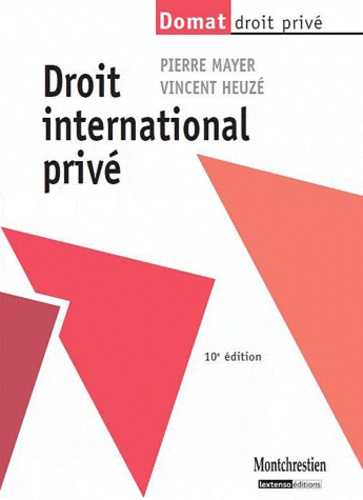Joerges on Conflicts Law as Europe’s Constitutional Form
Christian Joerges, who is a professor of law at Bremen University (and formerly at the European University Institute) has posted Unity in Diversity as Europe’s Vocation and Conflicts Law as Europe’s Constitutional Form on SSRN. The abstract reads:
“Unity in Diversity” was the fortunate motto of the otherwise unfortunate Draft Constitutional Treaty. The motto did not make it into the Treaty of Lisbon. It deserves to be kept alive in a new constitutional perspective, namely the re-conceptualisation of European law as new type of conflicts law. The new type of conflicts law which the paper advocates is not concerned with selecting the proper legal system in cases with connections to various jurisdictions. It is instead meant to respond to the increasing interdependence of formerly more autonomous legal orders and to the democracy failure of constitutional states which result from the external effects of their laws and legal decisions on non-nationals. European has many means to compensate these shortcomings. It can derive its legitimacy from that compensatory potential without developing federal aspirations.
The paper illustrates this approach with the help of two topical examples. The first is the conflict between European economic freedoms and national industrial relations (collective labour) law. The recent jurisprudence of the ECJ in Viking, Laval, and Rüffert in which the Court established the supremacy of the freedoms over national labour law is criticised as a counter-productive deepening of Europe’s constitutional asymmetry and its social deficit. The second example from environmental law concerns the conflict between Austria and the Czech Republic over the Temelin nuclear power pant. The paper criticises the reasoning of the ECJ, but does not suggest an alternative outcome to the one the Court has reached.
The introductory and the concluding sections generalise the perspectives of the conflicts-law approach. The introductory section takes issue with max Weber’s national state. The concluding section suggests a three-dimensional differentiation of the approach which seeks to respond to the need for transnational regulation and governance.
It can be freely downloaded here.
 The
The  The
The  18h30-18h45 : Rapport de synthèse, Thierry Hoscheit
18h30-18h45 : Rapport de synthèse, Thierry Hoscheit The last issue of the Revue critique de droit international privé was just released. It contains two articles and several casenotes. The full table of content can be found
The last issue of the Revue critique de droit international privé was just released. It contains two articles and several casenotes. The full table of content can be found  The tenth edition of
The tenth edition of